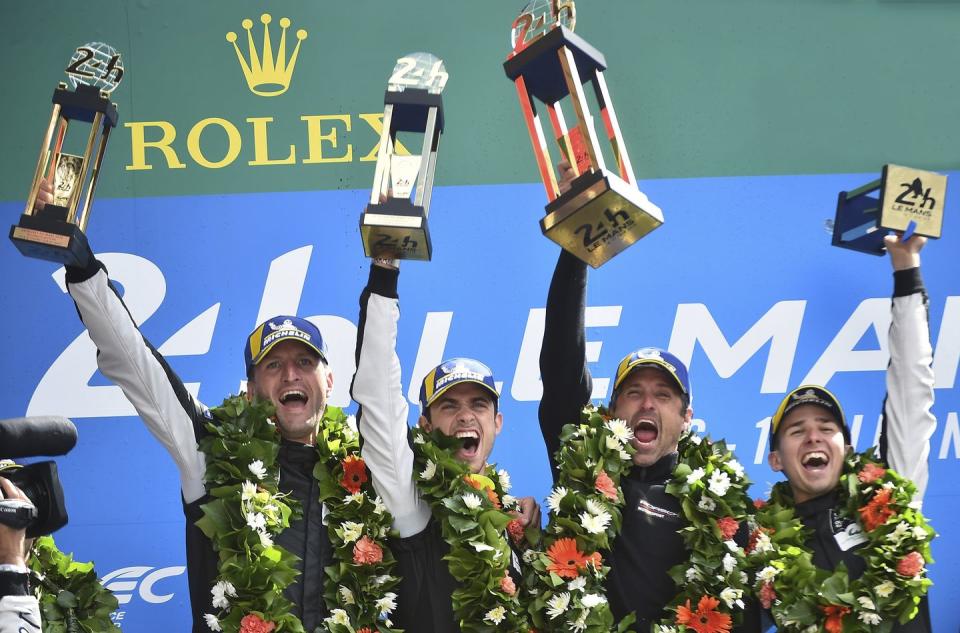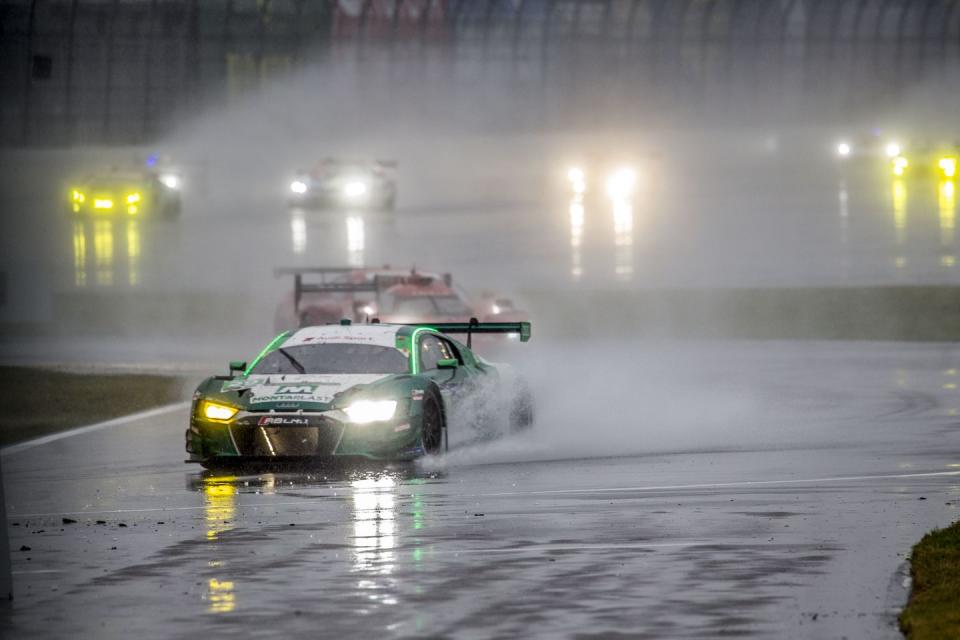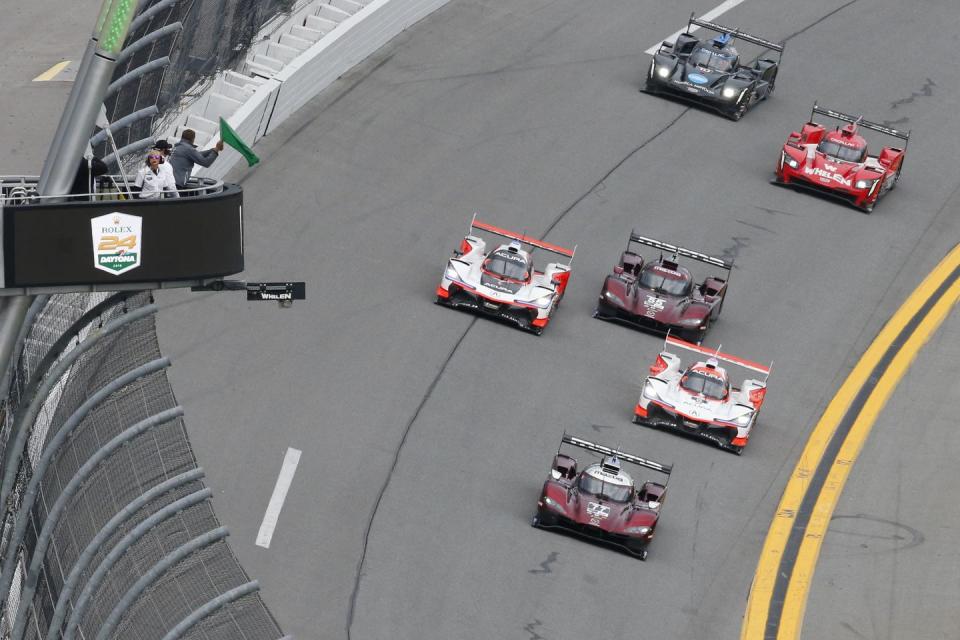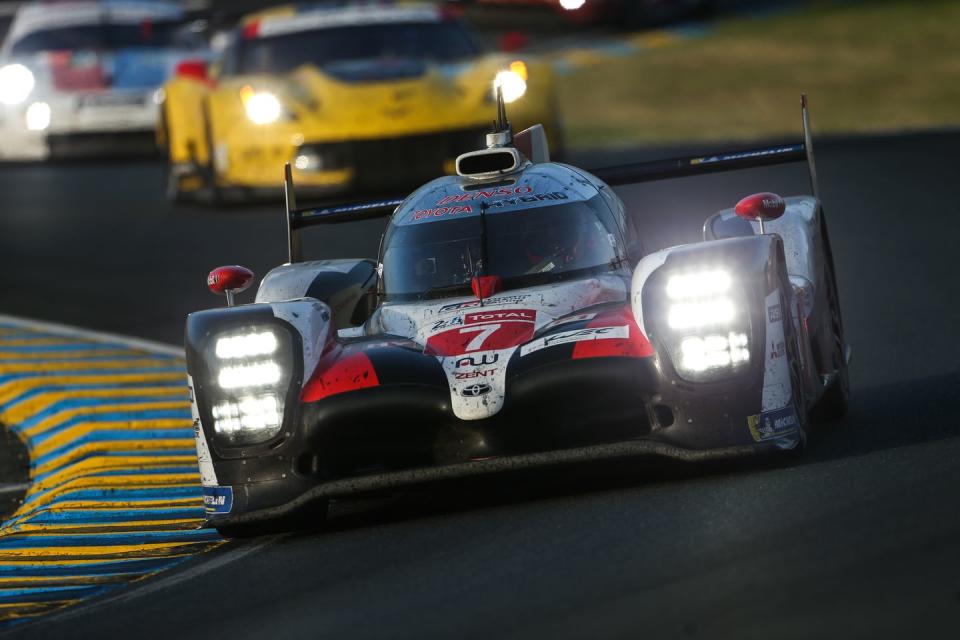The Problem With Driver Ratings

Sports-car racing is the only form of professional motorsport where drivers can be too fast for their own good.
This story originally appeared in the July 2019 issue of Road & Track.
David Perel learned this lesson the hard way. The South African was one of the quickest bronze-rated amateurs in European GT competition, and he’d been offered contracts for three paying rides for 2018. Then the FIA informed him that his driver rating had been elevated one level to silver. That changed everything.
“About 10 minutes after that email, all three teams withdrew their offers,” Perel recalls. “In fairness, it was probably right that I was upgraded. But nobody wants to be upgraded, because that means fewer opportunities. It’s very strange.”
Driver ratings are among the most confounding—and controversial—aspects of professional sports-car racing. The FIA categorizes drivers in four classes: platinum, gold, silver, and bronze. Generally speaking, pros are platinum or gold, while amateurs are silver or bronze. By specifying a mix of classes in each car, race series allow “gentleman drivers,” who pay for a seat in the car, to compete more or less equally professional drivers.
Of course, “more or less” doesn’t always cut it in a sport where laps are calculated to the hundredth of a second and unfair advantages are a core principle of success.
“I hate driver ratings,” says Jeff Segal, a gold-level GT driver who holds what he jokingly calls a PhD in driver ratings. “I don’t think they’re necessary. Sports-car racing went a long time without them. I’m a case in point. In a five-year period, I won three championships with an amateur [co-driver] competing against pro-pro teams. Driver ratings are the answer to a question that nobody asked. No matter how hard they try to classify drivers properly, there will always be outliers.”

Driver ratings tend to be more popular with team owners than with drivers, especially if the team’s business model is based on finding a gentleman driver to fund a pro-am operation. “There has to be a system in place,” says Bill Riley, who runs the Mercedes-AMG GTD team funded largely by bronze driver (and new-car megadealer) Ben Keating.
“Is the system perfect? No. But you shouldn’t really complain too much about a problem unless you have a solution. The problem is that there’s a fine line between a professional and an amateur.”
Cross-pollination between amateurs and professionals has long been the norm in endurance racing, where two, three, and sometimes four drivers are assigned to a single car. Naturally, the biggest prizes usually go to factory teams employing pros with a take-no-prisoners approach. But there has always been room for gentleman drivers who pay for their seats, and who might provide the budget for an entire team.
Think of Luigi Chinetti winning Le Mans in 1949 while his car owner, Lord Selsdon, drove a single 72-minute stint. Or Bob Akin, who won the Sebring 12 Hours twice while working as an executive. Well-heeled amateurs like Bruce Leven, Preston Henn, Ted Field, and Gianpiero Moretti continued to win major-league prototype races well into the 1990s by hiring and sharing their cars with big-name professionals. In sports-car racing, manufacturers and sponsors come and go, but gentleman drivers are forever—as long as they’re having fun.
This is the profound insight (or dirty little secret) that’s allowed Frenchman Stéphane Ratel to become one of the most influential figures in modern sports-car racing. The creator of the FIA’s GT3 and GT4 classes and promoter of GT races on five continents, Ratel began experimenting with driver ratings nearly 25 years ago. His first system featured only two classes, pro and am. “But it wasn’t a level playing field, because we had some very talented gentleman drivers,” Ratel says. So he went next to an A-B-C format, but that also turned out to be inadequate. “When we launched GT3, we perfected the system by adding one class at the top,” he says. “I wrote the regulations myself in 2005.”
In 2015, Ratel’s basic format was adopted by the FIA, and it’s now applied to more than 4000 drivers worldwide. According to what the FIA refers to as “driver categorization,” the platinum designation is reserved for factory drivers and hero types, while bronze covers well-to-do amateurs. Gold refers to solid, well-established professionals. Everybody else falls into the silver category—a catchall that’s the source of eternal griping.

The regulations are complex and, at times, contradictory. So even though silver-rated drivers are by definition amateurs, they can be “actively involved in coaching and instructing,” which sounds a lot like being a professional. And, in fact, the best silvers in most classes can generally run head-to-head with anybody. In the WeatherTech SportsCar-Championship race at Mid-Ohio in May, for example, the fastest lap in the GTD class was turned by Trent Hindman, a silver driver who outran several golds and two platinums.
“Four classes is too many,” says Mike Johnson, team manager and race strategist at Park Place Motorsports, which races Porsches with IMSA and the FIA. “Bronze should be guys who go to work Monday to Friday and write a check to drive. Platinum should be the superstars who’ve raced in Formula 1 or won championships. Gold should be everybody else. Or maybe we should just go back to the Jim Trueman–Bob Akin days. What have driver ratings accomplished besides creating more angst in the paddock? Now people are angry all the time.”
Even supporters agree the system is flawed. But despite anomalies and loopholes, they accept it as a necessary evil. “The only way I can afford to go racing is to have a gentleman driver racing with a pro,” says Will Turner, a team owner who has campaigned BMWs in various GT series over the years. “You’re only going to get gentleman drivers to see the value of racing if they feel they’re competitive. You need to make sure that the drivers they’re competing against are really ams and not ‘super silvers’ or ‘sneaky silvers’ or whatever you call them.”
A generation ago, nobody felt the need to mandate equitable driver pairings, and grids were filled with pro-pro, pro-am, and am-am teams. But as money—big money—has flowed into the sport, sports-car racing has evolved, says Paul Walter, IMSA’s director of racing operations. Factory efforts, once limited to the pointy end of the grid, have filtered down to the GTD class, which was designed primarily for customer racing.
Manufacturers and sponsors want to see the best results possible. So without regulations regarding driver pairings and minimum drive times, Walter says gentleman drivers would be marginalized. (See Lord Selsdon at Le Mans in 1949.) This, no doubt, would upset the ams, which would be a commercial catastrophe for a series dependent on the funding they provide. “Am drivers spend a lot of money to participate in the series,” Walter says. “They are the ones demanding these regulations.”
Each series that uses the FIA ratings retains the right to adjust and apply them as it sees fit. In the LMP2 and GTD classes of IMSA’s premier WeatherTech SportsCar Championship, a maximum of one gold or platinum driver is allowed per car. (The exception is the Rolex 24 at Daytona, which permits two golds or one platinum and one gold.) If you’re a gentleman driver, the blueprint is obvious: Hire a gold or a platinum, and then lock up the best silver money can buy (notwithstanding the fact that silvers are supposed to be amateurs).

The unintended consequence of IMSA’s regulations is that top-shelf silvers are the hottest commodity on the market. “You have to be a sneaky silver to get a ride, but once you get a gold rating, it’s game over,” says Canadian Daniel Morad (pictured above), a silver-rated driver racing in GTD and the Blancpain GT World Challenge America. Last year, after his rating was bumped to gold by the FIA, Morad appealed and reverted to silver status. But two others, Madison Snow and Sean Rayhall, retired from racing rather than accept gold status, which would have forced them to compete for rides against drivers with vastly more experience and name recognition.
If he were rewriting the rulebook, Morad says he would exclude platinum drivers from GTD, so European factory drivers couldn’t snag jobs from qualified North Americans.
Other suggestions include junking the ratings altogether (suggested by Segal), going to a two-class pro-am format (Boris Said), and breaking silver into two subclasses (Perel). But Ratel insists the system needs nothing more than minor tweaks. “We are totally convinced we have solved the problem in the best way,” he says blithely. And while Walter isn’t as sanguine as Ratel, he says that creating additional classes would create additional complications. “The same is true for fewer classes.”
Love them or hate them, driver ratings appear to be here to stay. Inevitably, the system will produce winners and losers. Not fair? Arguably. But, hey, that’s racing.
But Wait, It Gets More Complex:
Although most professional sports-car series use the FIA driver ratings, they apply them in different ways.

IMSA WeatherTech SportsCar Championship
DPi and GTLM are unrestricted. In LMP2 and GTD, only one platinum or gold driver is permitted per car. In the Rolex 24 at Daytona, this allowance increases to one platinum and one gold, or two golds.

Blancpain GT World Challenge America
No restrictions in the Pro category. Pro-am requires one bronze driver with a silver, gold, or platinum. The Am category is for two bronzes. Silver Cup is for two silvers.

World Endurance Championship Le Mans & The European Le Mans Series
No bronzes are permitted in LMP1. LMP2 requires at least one bronze or silver and no more than one platinum. LM GTE Pro is unrestricted. LM GTE Am demands one or two bronzes or silvers, depending on race length.
You Might Also Like

 Yahoo Sports
Yahoo Sports 